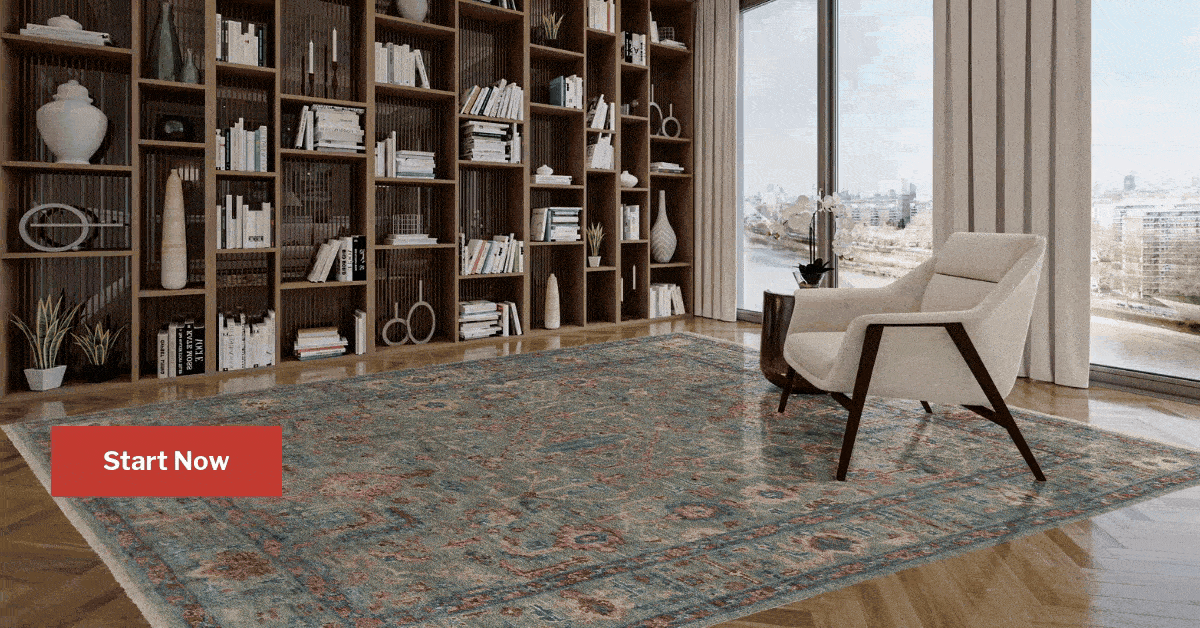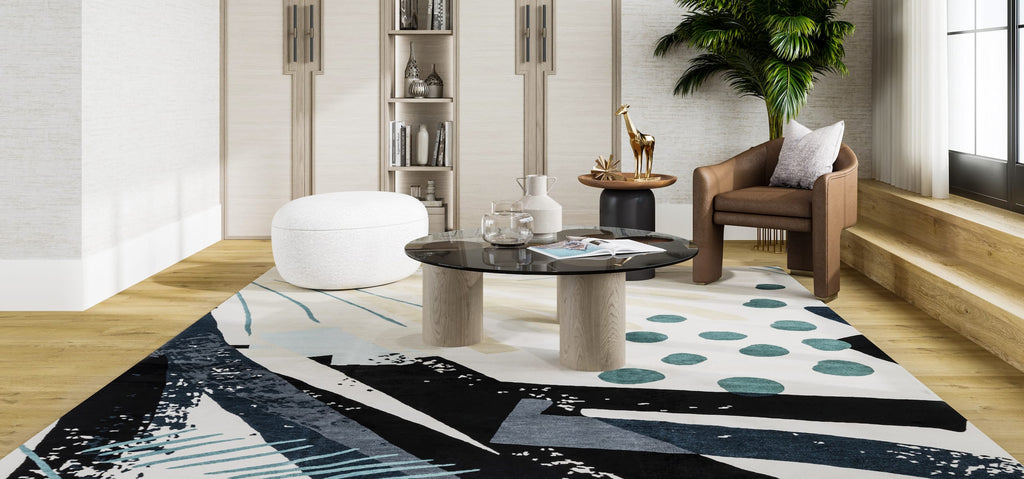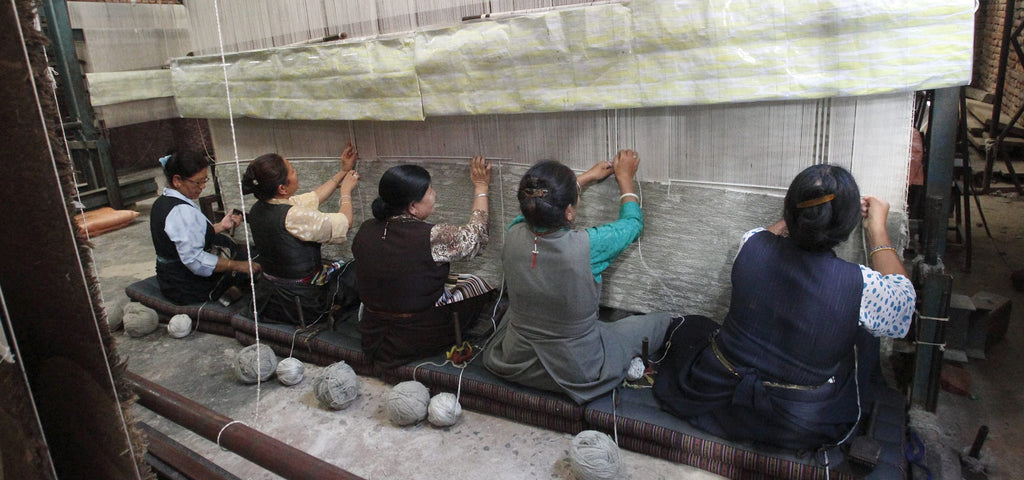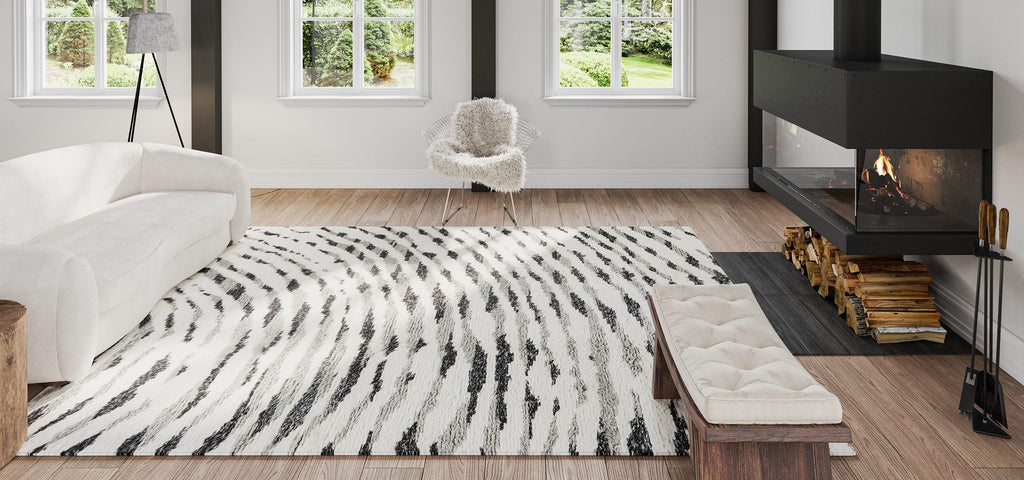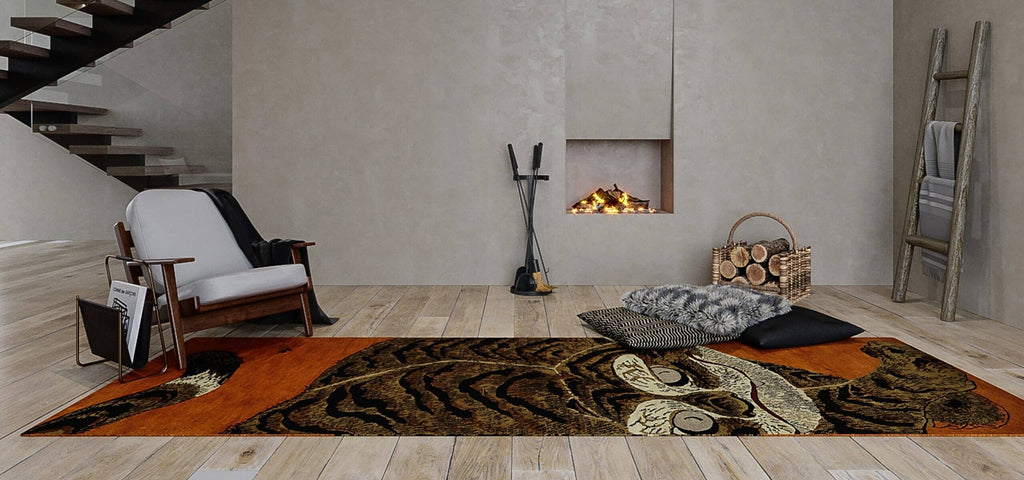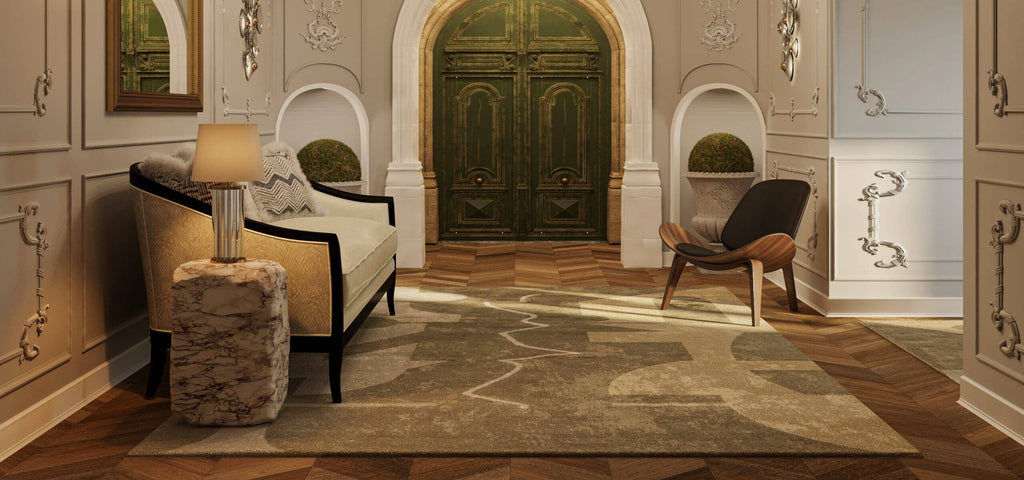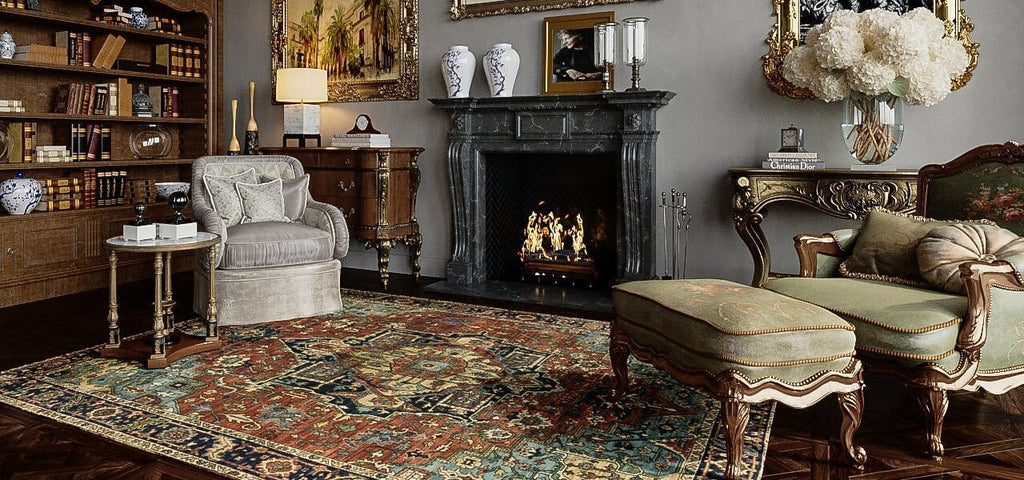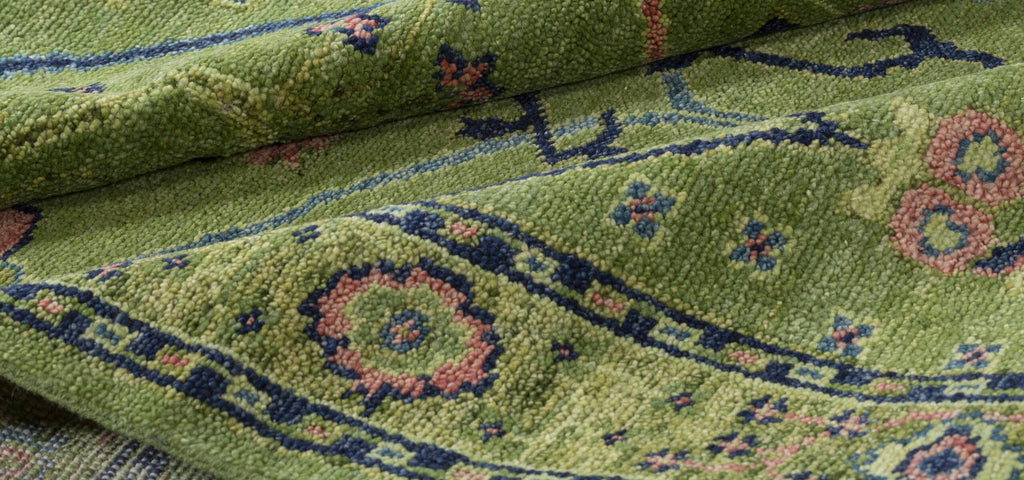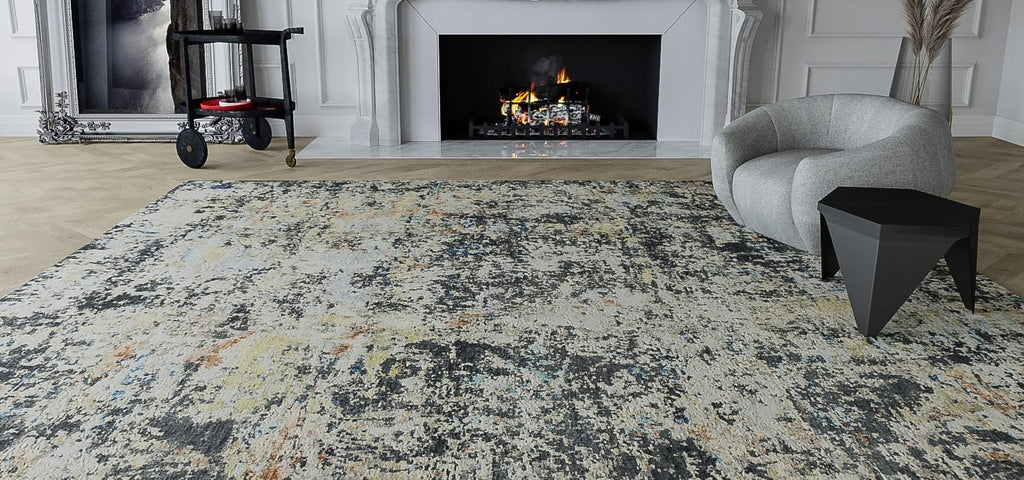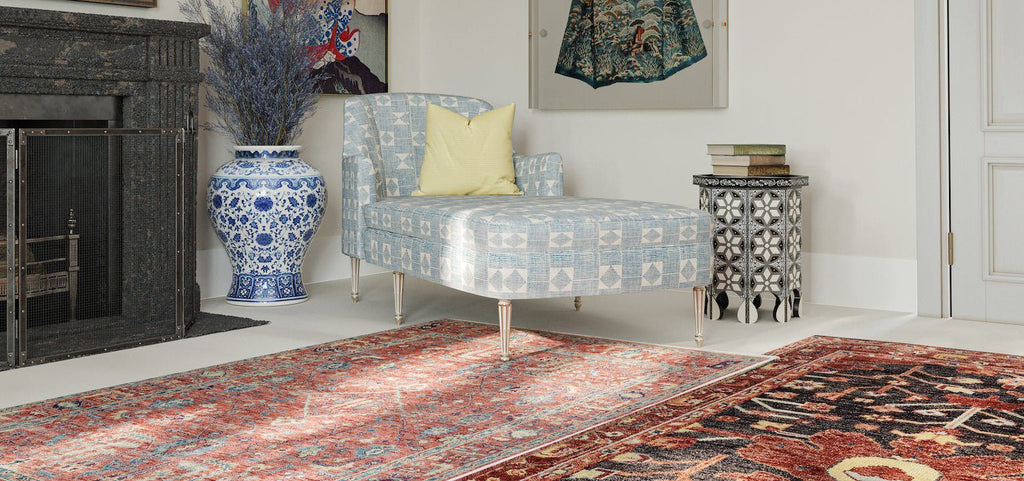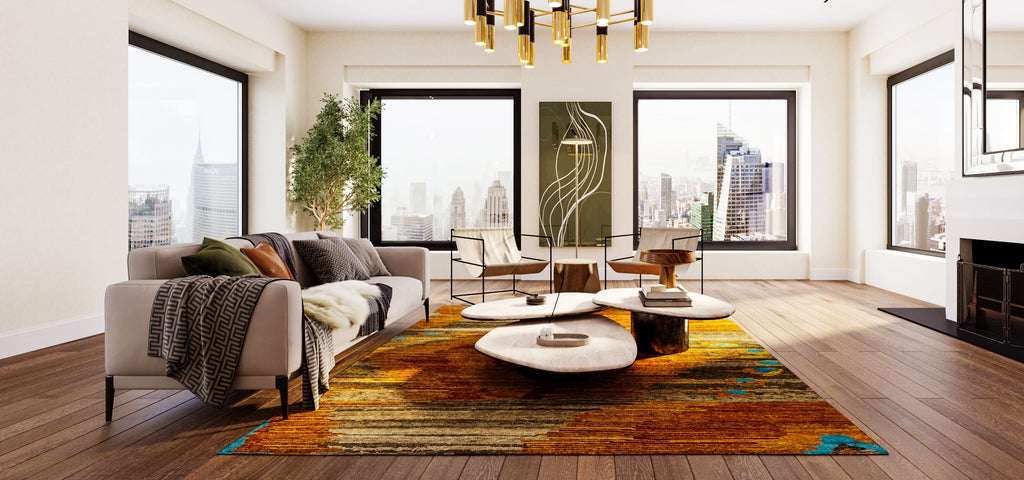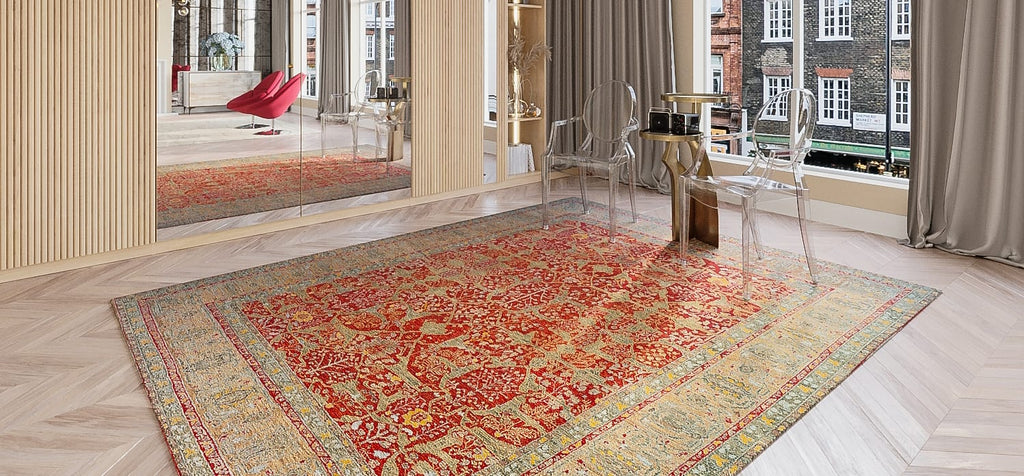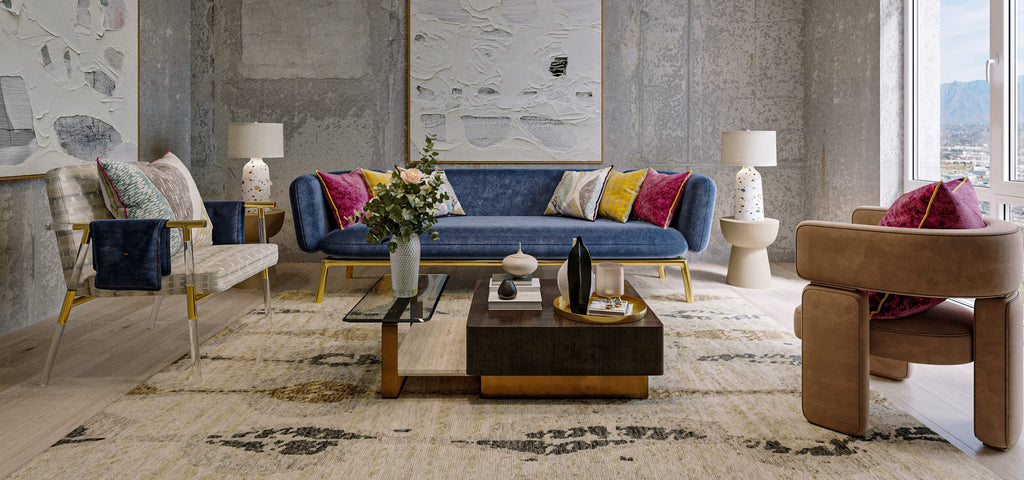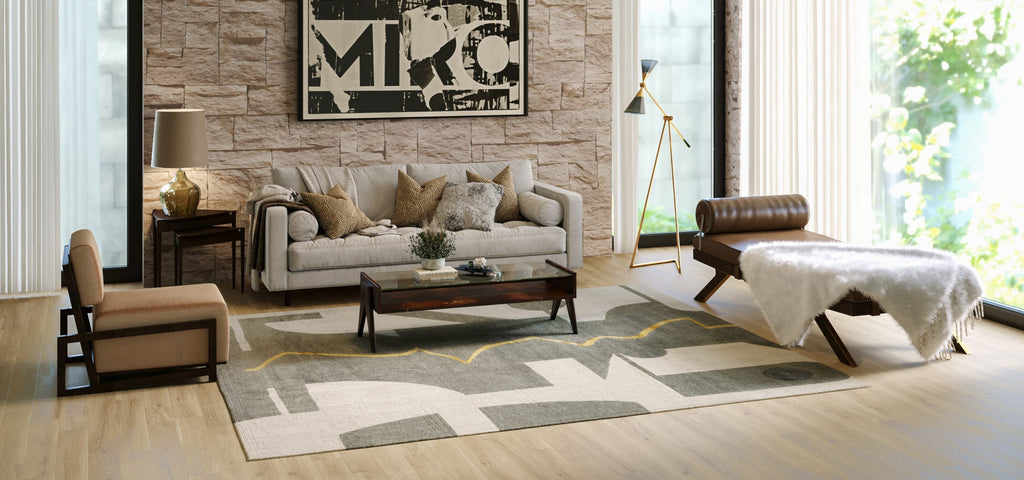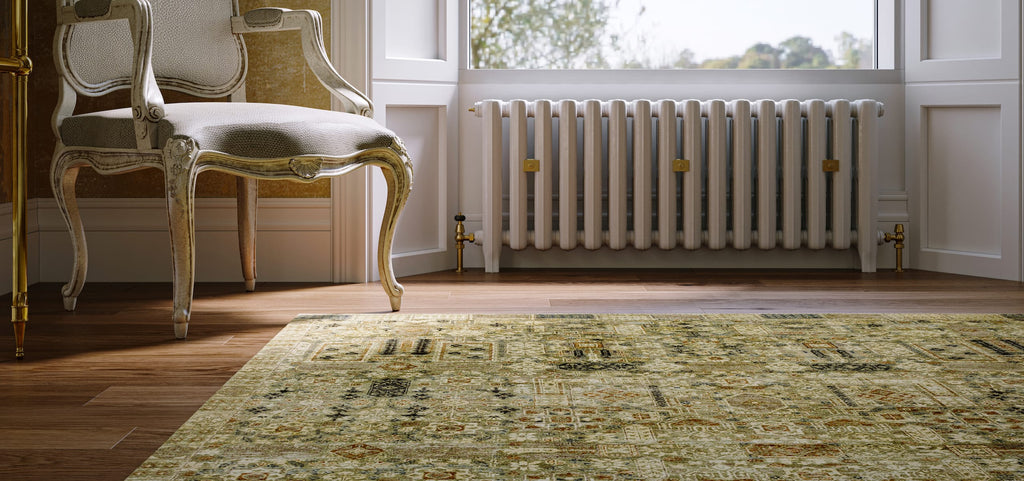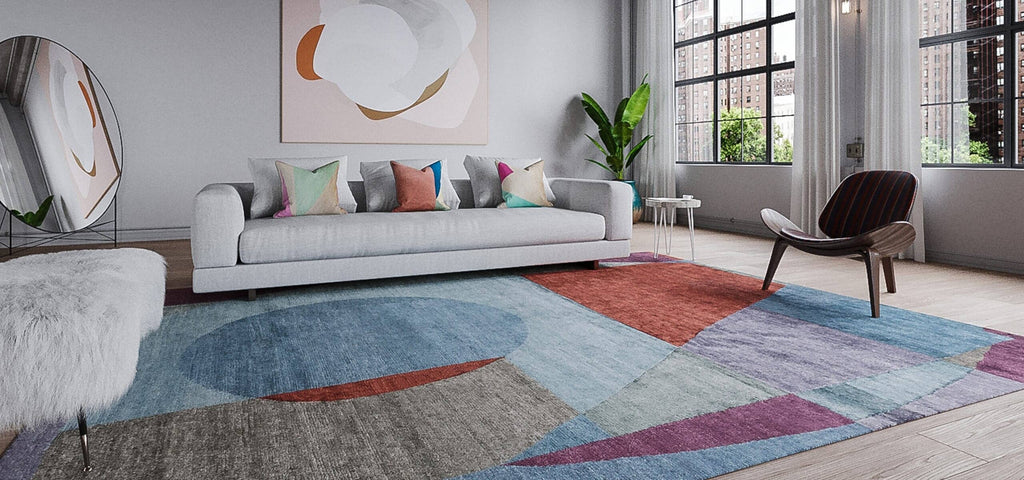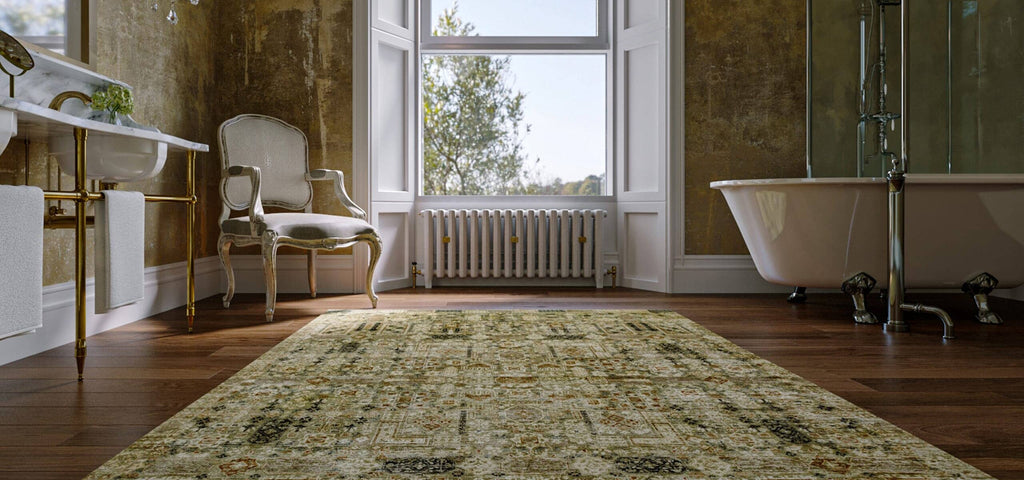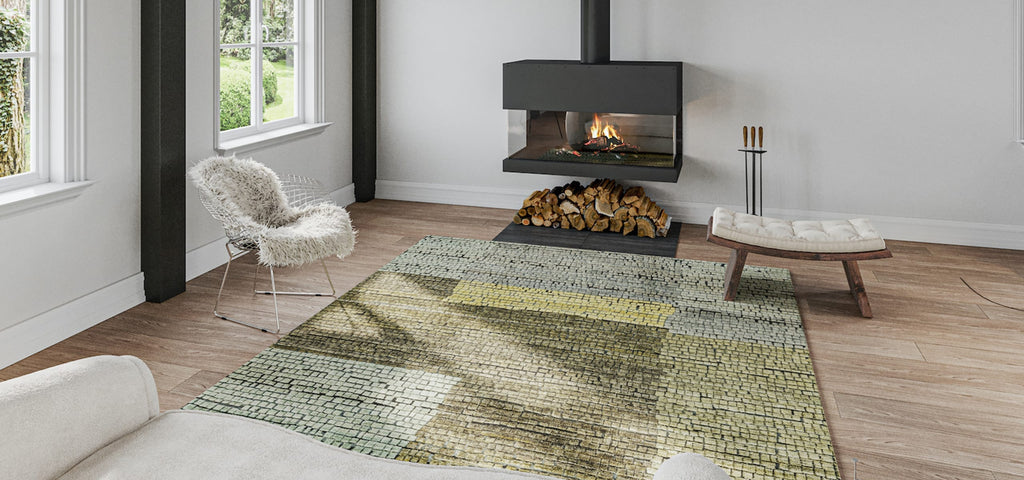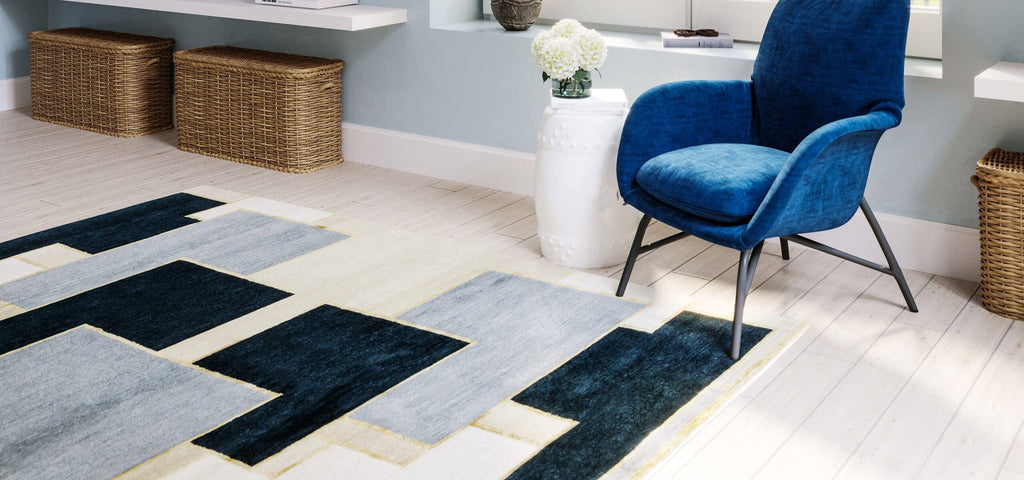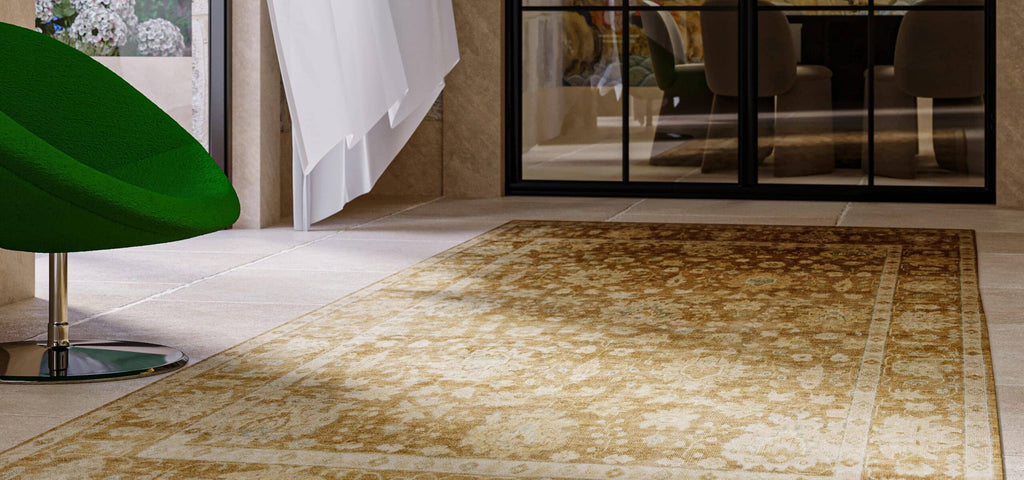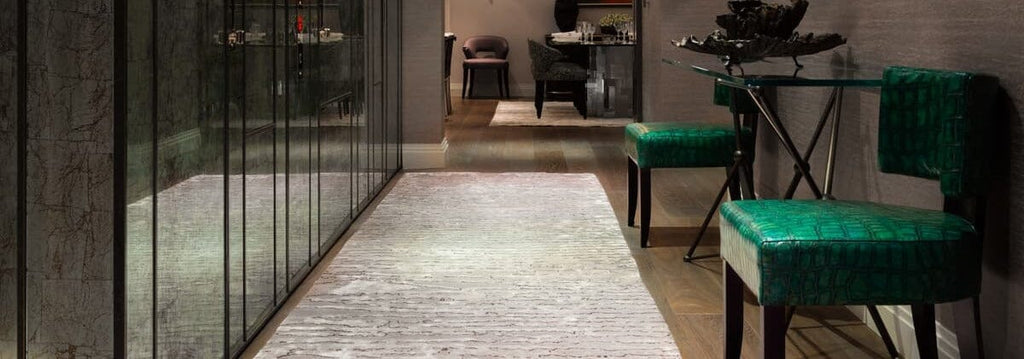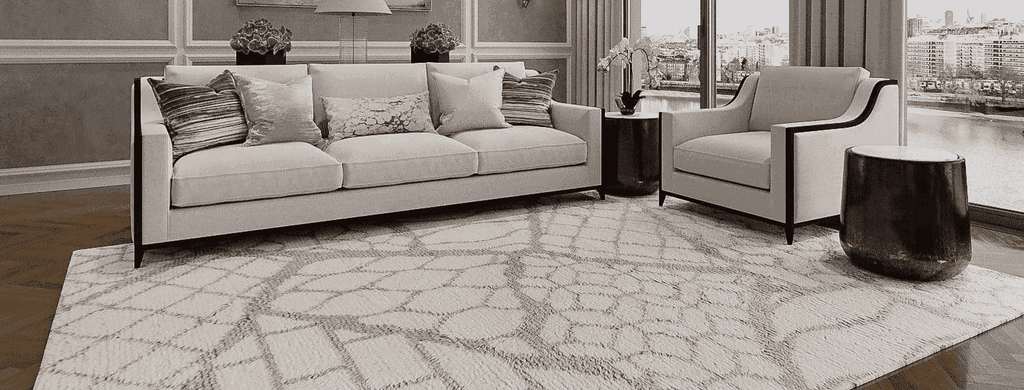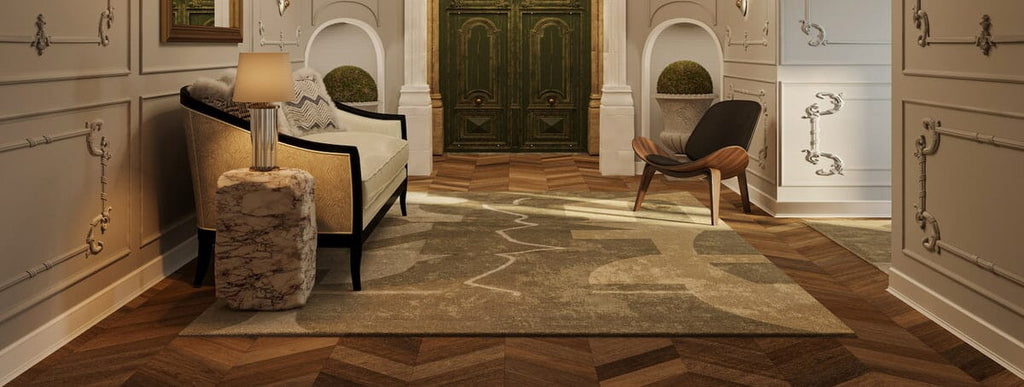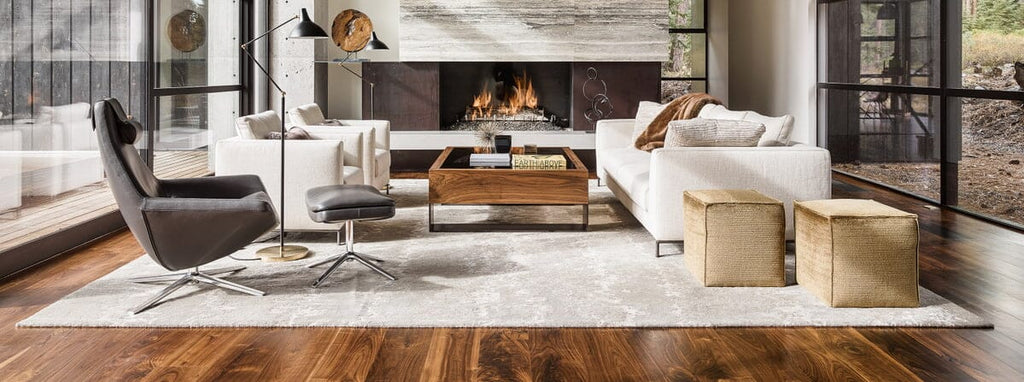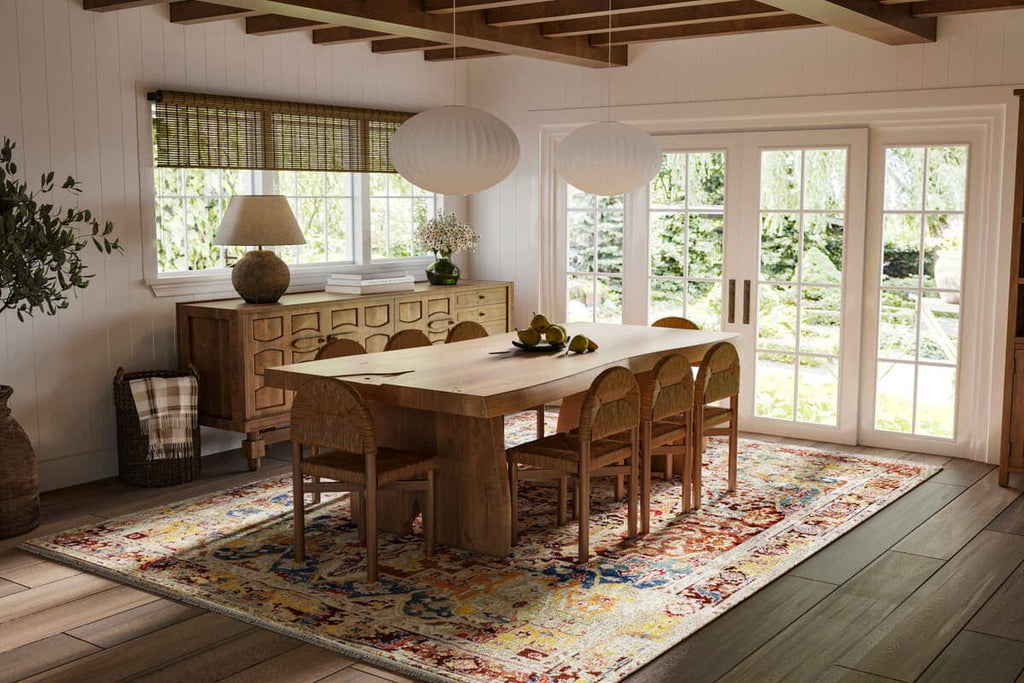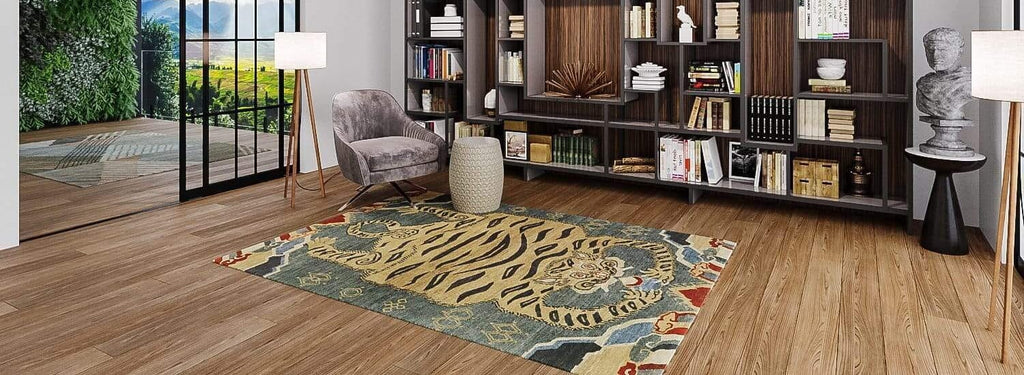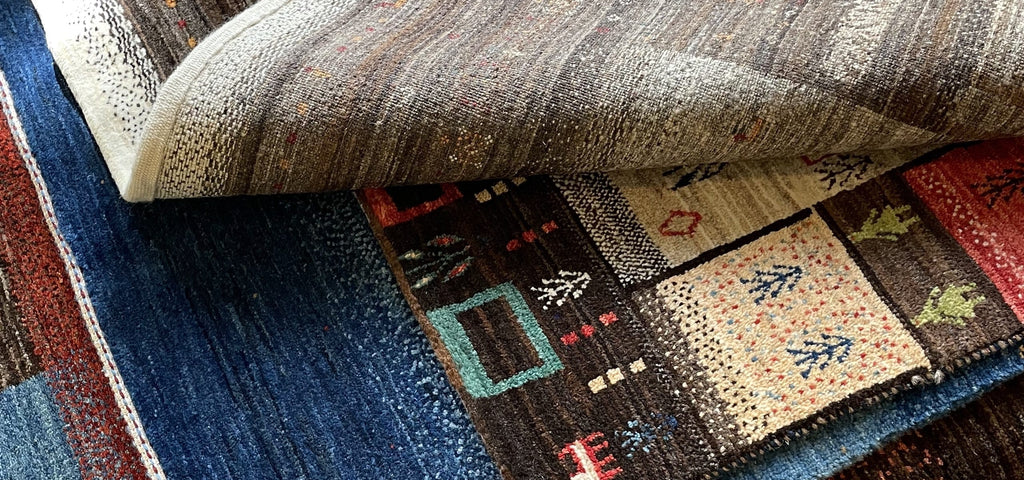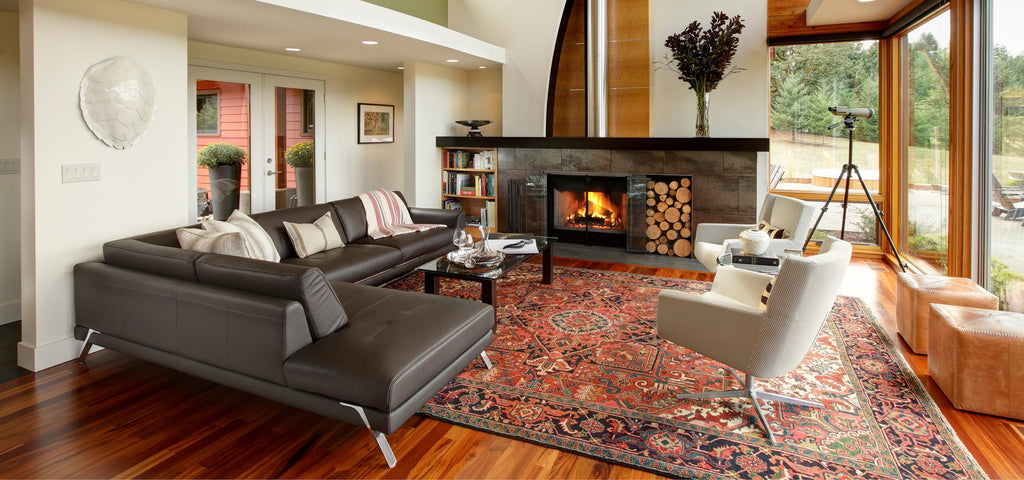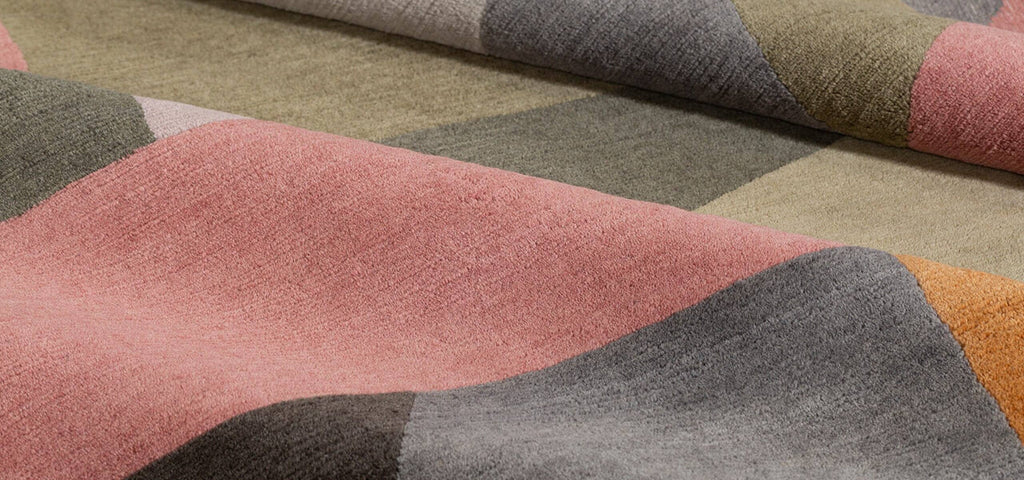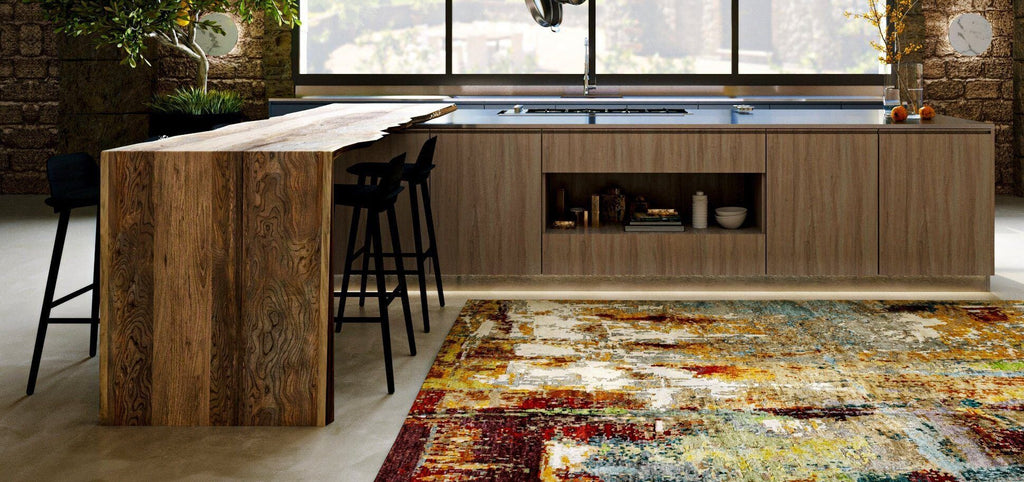When it comes to home furnishings, we sometimes find ourselves swinging on the pendulum between form and function. Rugs provide form and function by adding personality, warmth, and a splash of much-needed color underfoot while protecting your flooring and insulating against noise and temperature.
And among the highest-quality rugs in the world is the kilim rug.
We’ll examine what may be the world’s favorite type of handmade rug, including:
- What is a kilim rug
- The kilim’s origin
- How kilims are made
- What sets kilim’s apart from other rugs
- How to ensure your kilim rug stays soft and vibrant for years
What Is a Kilim Rug?
What is “kilim?” Kilim originates from the Persian word “gelim” which refers to a specific kind of pileless, tapestry-woven textile, usually in the form of a rug.
Artisans create the designs on a kilim rug by interweaving weft (horizontal) and warp (vertical) threads on a loom. This process creates a reversible rug with the design visible on either side. Kilim rugs are also low-density—much flatter and thinner than most pile rugs. However, they are soft and get even softer over time.
In terms of form, kilims feature vibrant colors and complex geometric designs. They’re perfect for adding some exuberance to otherwise neutral-hued rooms (such as bedrooms, bathrooms, or kitchens).
The History and Symbolism Behind Kilim Rugs
Kilim has a rich cultural history dating back to ancient times. The earliest known example of a kilim rug was discovered in excavated grave mounds in the Siberian Altai region and is believed to have originated around the fifth century CE.
It’s believed the region’s sun and soil make a kilim rug’s hue unique. The soil stays moist overnight, and in the morning, the sun causes the moisture to evaporate.
Every summer, thousands of farmers take time from tending their land to work in carpet fields. The rugs are laid out and flipped repeatedly. This process removes some of the dyes used in the carpets, softening their colors and giving them that traditional aged look.
The traditional patterns and motifs woven in kilim rugs represent the duality of life: light and dark, good and evil, life and death, and more. They‘re often represented with high-contrast patterns and nature-inspired designs to convey that balance.
The Kilim Rug-Making Process
The skill and time required to make a kilim rug may be substantial: Hand-weaving a single 9-foot by 6-foot rug may take as long as 16 weeks—even for an experienced artisan. This dedication to traditional artisanship comes through in the beauty and uniqueness of every hand-woven kilim.
1. Material Choice
As mentioned above, kilim rugs are flatweaves most often made from wool. Wool is a naturally durable fiber that offers pliability for spinning ease. It also has a natural shine and is easy to dye in various colors. True kilims use only natural vegetable-based dyes, creating a more muted, organic color palette.
Although wool is the preferred material for a kilim, weavers may incorporate cotton, linen, silk, or even animal hairs into the rug—generally goat, horse, or camel hair. These additional materials improve the rug’s durability, add softness or sheen, or create interesting accents (like tassels).
2. Patterns and Motifs

Skilled weavers will use various techniques and dyed weft yarns to create ornate, complex designs and patterns, typically in geometric motifs specific to the people or area they represent.
The patterns often reflect wishes of good luck, prosperity, and good fortune with symbols representing specific beliefs and superstitions passed down through generations. Such symbols include:
- Running water
- Flowers
- The tree of life
- Stars
- Yin-yang
- The evil eye
- Tribal motifs
3. Weaving Method
Using traditional techniques, the weaver will intertwine horizontal wefts with vertically aligned warps on a loom. Weft threads are weaved across the warp and pulled down tightly to completely cover the warp threads.
Once the weaver finishes the rug, they untie the kilim from the loom’s frame and tie off the warp thread to create the rug’s fringe.
4. Fading Process
Because vegetable dyes are sensitive to sunlight, the classic faded colors of a kilim give it its well-known character. Artisans lay these rugs outside, border to border, for about three months. They’re rotated and flipped to allow the sun to subdue and perfect the shade of their vibrant colors.
How to Judge Kilim Rug Quality
High-quality rugs result from high-quality materials made with hand-woven, detail-oriented methods, something for which kilim rugs are known. Here’s how to spot a high-quality kilim.
Materials
One of the quickest ways to judge kilim quality is to examine its material. Kilim rugs traditionally use 100% wool. The wool should feel flexible with a slight give when you apply gentle pressure, neither too soft nor too dry and stiff.
Wool from healthy, happy sheep tends to be of a higher quality. Consider the wool’s origin—when farmers prioritize the well-being and success of their flocks, their high standards of care come through in the wool quality they produce.
Hand-Woven Techniques
Machines can produce kilim rugs, but handmade rugs are of higher quality due to their production technique. Only hand-woven rugs remain true to cultural traditions and the value of human craftsmanship.
Check the back and corners of any kilim rug to determine whether it was traditionally woven. Hand-woven rugs are beautifully irregular (especially with antique kilim rugs); these “perfect imperfections” prove human hands created them.

Colorfastness
Not all carpet dyes are the same. Some rug colors may bleed into other areas of the design. Determining colorfastness is essential to ensure the dyes won’t migrate over time or when wet.
To do this, determine the type of dye used in the rug and see if dye stabilizers are present. If you can, perform a quick colorfastness test to be sure. Press a clean, wet, white towel onto a small, inconspicuous area on both sides of the rug and look to see if it removes any color.
FAQs: Kilim Rugs

What Is a Kilim Rug?
Traditional kilim rugs are flat-woven, pileless Persian rugs woven with bold, geometric patterns and motifs. The pileless rugs are typically hand-woven in ancient Persian regions, primarily Turkey.
How Do You Pronounce Kilim Rug?
You pronounce the word “kee-LEEM,” though you may also hear it pronounced “kih-LEEM” or “kih-LIHM.”
How Can You Tell if a Rug Is Kilim?
The most significant differentiating factor is that kilim rugs are pileless. They’re woven flat—setting them apart from piled rugs. A finished kilim will have a more defined, graphic look with clearly delineated designs.
What Is a Kilim Pattern?
Kilim rugs are often identifiable by their unique geometric patterns. While standard piled rugs may mimic the designs traditionally associated with kilim, they’ll unlikely match a kilim’s vibrancy or clarity. The flatweave of the rug allows for a more distinct image of the tribal motifs and symbols.
Are Kilim Rugs Reversible?
Yes! The techniques used in slit weaving kilim rugs make them reversible. Thanks to its flat woven finish, the patterns and colors are the same on both sides of the rug.
Are Kilim Rugs Hard to Clean?
Kilim rugs are easier to clean and maintain than many piled rugs. In most cases, you won’t need specialized skills or unique tools to clean it and keep it in good shape. For centuries, the preferred cleaning method has been to take it outside and shake it out. You may also choose to beat the rug with a soft-bristled broom or carpet beater.
How Much Does a Kilim Rug Cost?
Because handmade kilim rugs demand so much time and skill to create, it may surprise you that they’re more budget-friendly than many other handmade oriental rugs—as low as $675.
Why? To put it simply, other handmade rugs require more time to make and demand even more effort. Because kilims are flatwoven, artisans can produce them faster and in greater numbers, making them more affordable overall.
However, kilim rugs can cost over $7,000 depending on a variety of factors:
- Antique, semi-antique, or new
- Hand-woven craftsmanship vs. machine production
- High-quality materials vs. low-grade materials
- Intricacy of design
- Size and shape
Can You Vacuum a Kilim Rug?
The go-to solution for piled rug owners, vacuuming, works just as well on kilim rugs. You should, however, ensure your vacuum doesn’t damage the threads. A low-suction vacuum with the rotating beater-brush heads turned off is ideal.
How Do You Keep a Kilim Rug in Place?
To keep a kilim in place, we recommend placing a rug underlay or pad beneath it.
Because kilim rugs are flatwoven, they’re incredibly lightweight compared to piled rugs. This feature makes them more portable—they can be easily rolled up and moved. However, their weight and portability make them likely to shift or slip over a floor.
Can You Machine Wash a Kilim Rug?
It is not recommended to machine wash kilim rugs.
You can make a gentle cleaning solution by mixing ½ cup of hand-cleaning carpet shampoo with 1 tbsp of white vinegar and 4 ½ cups of warm water. Lather the solution evenly throughout the rug, spreading it with a soft brush using light, even strokes. Then rinse the rug in clean, lukewarm water and allow it to dry.
Are Kilim Rugs Good for High-Traffic Areas?
Kilim rugs are perfect for high-traffic areas! Durability is one of the things that gives kilim such an enduring cultural legacy. For centuries, people have used kilims as prayer rugs and saddle covers and to protect and enhance the floors of mosques and other important buildings.
How Do You Hang Kilims on the Wall?
To avoid damaging a kilim rug when you hang it on the wall, use the same technique as museums and galleries: tape strips or curtain rods. You can support the rug’s weight with heavy-duty velcro strips or rug clamps attached to curtain rings along the length of a rod.
When you hang a rug on the wall, readjust it periodically to prevent it from becoming misshapen due to uneven weight distribution.
Styling Tips for Kilim Rugs
There are many advantages to decorating with a kilim rug. They’re attractive, durable, easy to maintain, and capable of fitting within nearly any budget. And to top it all off, they bring a powerful sense of culture and tradition. There’s a perfect kilim for every season and most decor styles.
Here’s how you can incorporate a kilim into your home design:
1. Placement
A kilim rug’s bright colors and eye-catching motifs bring color and warmth to any room. While they work just about anywhere, consider these factors to make a bold impact and simultaneously keep your rug in great shape:
- Keep the rug out of direct sunlight as the dye is sunlight sensitive.
- Properly secure the rug with a pad or underlay, as kilim rugs can shift.
- Place Kilim rugs under furniture, on walkways, or in an accent area of a room, but adjust them occasionally to prevent divots or dents in the material.
2. Layering
Rug layering is an excellent way to make a kilim’s bold patterns and colors stand out. It allows you to use a rug that would otherwise be too small for a larger space. Choose another flatwoven or low pile rug in a more subdued color or pattern to frame the bolder kilim on top.
3. Mixing and Matching
Consider bringing two separate kilim rugs into a single space. Mixing and matching patterns in your decor is an excellent way to achieve balance and style in your home. When mixing patterns, follow a few rules to make it work:
- In general, choose patterns with a different scale, either larger or smaller, than other patterns in the room.
- Stick with a single preferred color scheme, as too many colors look busy and distracting.
- Try patterns that differ from the geometric motifs of a kilim, like stripes, florals, brocades, checks, or herringbone.
The Bottom Line
Are you interested in finding the perfect kilim rug for your home design? Shop handmade kilim rugs today, and let Tufenkian help you find the ideal option to match your needs. After all, the right rug is about form and function, and you’ll enjoy both with kilim rugs.
Tufenkian Artisan Carpets are truly gorgeous! I love the uniqueness and artistry of each piece. -Lakeshore Design Studio
Test drive a kilim rug or visit our showroom today.
